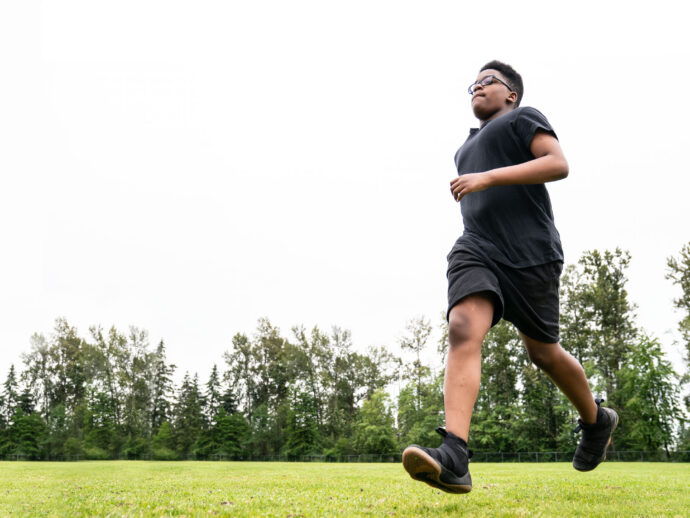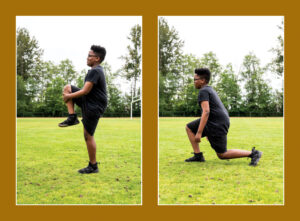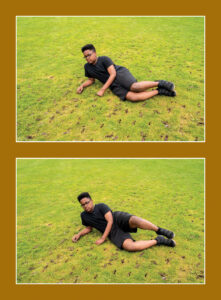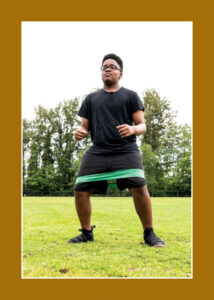
The benefits of physical activity for children are numerous. Running can be a fun way to get children to increase their fitness and build a lifelong healthy habit. Here’s how.
Kids benefit from regular physical activity in so many ways—healthier body composition, better bone density, and maybe even improved academic success, to name just a few. With running, kids can be active with minimal cost and low stress while developing a fundamental movement skill, placing them well on their way to a lifetime of active living.
Getting inspired
Check out fun runs
Volunteering at a fun run is a great way for children to get up close to runners of all ages and abilities. Runs organized specifically around a children’s charity are likely to have more young participants, potentially sparking an interest in your own child. If you’re a runner yourself, bring your kids along on race day. While cheering you on they’ll get immersed in the positive atmosphere first-hand.
Mix it up
Grow your child’s interest in running by frequently changing up the routine. Explore different areas such as new neighbourhoods and parks. Consider going on a trail run where you can stop to admire nature, or a beach run followed by a cool-off swim. Themed runs, scavenger hunts, and obstacle courses are other great ways to break up the routine.
Make short-term goals
With some foresight on the adult’s part, kids can experience success early on in running, which will bode well for a lifelong interest in physical activity. Short-term goals, such as completing an extra lap of a course, are much more effective for children than longer-term goals, such as completing a 2 km race. When communicating with your child on what they did well, be as specific as possible.
Join local running and track clubs
Running clubs can be competitive, such as those associated with a university (for example, Dino Youth at the University of Calgary Athletics Club), or casual, such as school-based ones (for example, Start2Finish Run and Read).
What to look for in a running club
Whether the club is casual or competitive, look for a healthy balance of fun and challenge, with an emphasis on safety. Michaela Colluney, kinesiologist and owner of Kids on Track Athletic Development at Body Engineered: Functional Movement Training in Vancouver, advises that coaches need to be aware of individual differences in the physiological (aerobic capacity, for example), psychological, and cognitive development of their athletes.
Safe progress will depend on how well training sessions are structured to meet their level of maturity in these areas. Colluney also recommends that the ratio of coaches to runners not exceed one coach per 12 runners.
Learning the nuts and bolts of running
Keep one eye on technique
Proper running technique can help conserve energy and reduce the risk of injury. Colluney suggests focusing on the key elements—alternating arm and leg action, head facing forward, and running tall. She warns, “It’s important for coaches to understand their limitations and not to overcorrect, as this will most likely have a detrimental effect … if you don’t know, just let them go!”
Footwear—choose fit over style
For children new to running, it’s most important to ensure their running shoes or cross-trainers fit properly—with a thumbnail distance at the top end of the shoe. Socks that trap moisture and don’t slip, as well as properly tied laces can also go a long way in keeping kids’ feet happy.
Warming up
Monkey shuffle

- In a low squat position with your chest lifted, shuffle 6 big steps to the right, then to the left.
- Stay low.
- Repeat 3 times in each direction. High-knee forward lunges
- In a standing position, hug your right knee to your chest.
- Release, then place your right foot ahead of you to move into a lunge.
- Stand up and repeat on the left. Do 12 lunges.
High-knee forward lunges

- In a standing position, hug your right knee to your chest.
- Release, then place your right foot ahead of you to move into a lunge.
- Stand up and repeat on the left. Do 12 lunges.
Drinking bird

- Hinge forward from your hips, reaching for the ground while extending your left leg behind you.
- Stand back up and take a step forward with your left leg to repeat the sequence on your right side.
- Keep your back straight at all times.
- Do 12 steps in total.
Building strength
Marching bridge

- Lie on your back with knees bent and feet hip-width apart.
- Lift your hips up to a diagonal line (shoulders to knees). Keep your tummy muscles engaged by imagining a tight string from your hip creases to your lower ribs.
- Lift your left knee toward you without lowering your pelvis. Keep your right knee in line with your hip.
- Lower the left knee and repeat on the other side.
- Complete 12 repetitions before lowering your pelvis to the floor.
Clamshell

- Lie on your side with your hips and knees bent to 90 degrees, and your shoulders, hips, and heels in one line.
- Tighten your tummy muscles to prepare. Lift the top knee off the bottom knee, keeping the ankles in contact. Lift only as high as you can while keeping your pelvis from rolling back.
- Lower slowly to tap the bottom knee before lifting back up.
- Do 2 sets of 10 per side.
Squat with band

- Tie an elastic resistance band around your mid-thighs while standing.
- Push out against the band to bring your legs to hip-width apart.
- Keep pushing into the band with your thighs as you send your hips behind you into a squat.
- Press back up to standing, maintaining tension in the band at all times.
- Repeat 15 times.
Child-specific running events
| Run | Date | Location | Ages | Distance |
| Vancouver Mini Sun Run | April | Vancouver | under 18 | 2.5 km |
| Little Souls Kids Marathon | May | Lethbridge, Alberta | 12 and under | 2 km on race day (and the remaining marathon distance in the weeks beforehand) |
| Mud Hero Kids | June to September | Toronto; Ottawa; Montreal; Silver Star Mountain (BC); Red Deer (AB); Grunthal (MB); Debert (NS) | 4 to 12 | 500 m |
| Oasis ZooRun—Cub Run | September | Toronto | 2 to 10 | 800 m |
Did you know?
The benefits of physical activity are many. But to derive the most benefits, current Canadian Physical Activity Guidelines for five- to 17-year-olds recommend at least 60 minutes a day of moderate to vigorous aerobic activity. Sadly, less than a quarter of Canadian children are currently reaching this threshold.
Running resources across Canada
- Alberta Medical Association, Doctors Nova Scotia, and Ontario Medical Association offer free, downloadable handbooks for starting school-based run clubs.
- Run Jump Throw Wheel by Athletics Canada uses track and field activities to build foundations in running, jumping, throwing, and wheeling (for children using wheelchairs).
- Active Start, developed by Special Olympics Canada, teaches basic motor skill development for children with intellectual disabilities aged two to six.
Playing it safe
Injury prevention
Dr. Lee Schofield, a Toronto-based sport and exercise medicine physician, suggests starting off with a well-defined track or course that can be easily tailored to individual abilities, and where the distance can be gradually increased over time. Being mindful of the terrain and timing of runs is also important, adds Schofield—avoid peak sun times, and try to keep the hills and uneven terrain to a minimum.
When to seek help
Pain during running, especially when it persists after the run or into the following day, is a sign that your child should be seen by a doctor, says Schofield. A limp or any noticeable change in walking or running gait shouldn’t be ignored, and neither should any breathing problems during a run, such as wheezing or asthma-type symptoms.





































